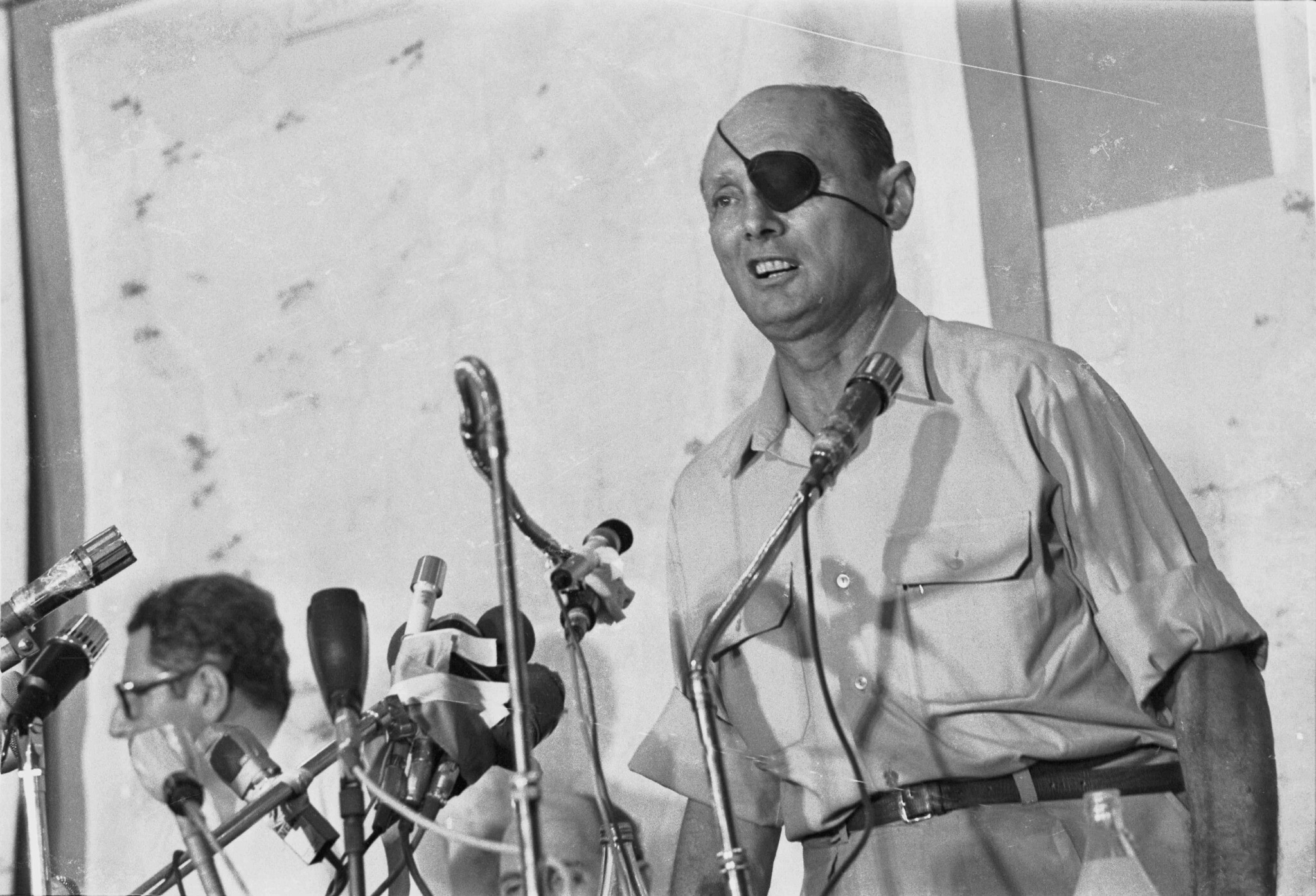It was the Yom Kippur war that extinguished his fame: Who is Moshe Dayan?
As the second son of a Jewish family who emigrated from Ukraine, he was born in the Deganya Alef Kibbutz in Palestine, which was under the rule of the Ottoman Empire at that time. Moshe Dayan attended agricultural school here. When he was 14, he joined the Haganah.

He was born on May 20, 1915, as the second son of a Jewish family who emigrated from Ukraine to the Deganya Alef Kibbutz in Palestine, which was under the rule of the Ottoman Empire at that time. Later, his family settled in Nahalala, the first moshav (a settlement built for agricultural union and cooperative purposes). Moshe Dayan attended agricultural school here. When he was 14, he joined the Haganah, the Jewish defense force. Here he learned guerrilla warfare tactics.
What is the role of the Haganah?
Haganah ('The Defense') was the main Zionist paramilitary organization that operated for the Yishuv in the British Mandate for Palestine. It was founded in 1920 to defend the Yishuv's presence in the region, and was formally disbanded in 1948, when it became the core force integrated into the Israel Defense Forces shortly after the Israeli Declaration of Independence.
His military life began in 1937, in special night companies, with the guerrilla warfare methods he learned from British Captain Orde Wingate. These companies were the units that fought against the Arab gangs that rebelled in Israel and constituted an important part of the Israeli army. Between 1936 and 1939 he served under special police forces in Galilee and the Jezreel Valley. After the British disbanded the Hagana in 1939, he was caught and sentenced to two years in prison.
Moshe Dayan (May 20, 1915 – October 16, 1981) was an Israeli military leader and politician. As commander of the Jerusalem front in the 1948 Arab–Israeli War, Chief of Staff of the Israel Defense Forces (1953–1958) during the 1956 Suez Crisis, but mainly as Defense Minister during the Six-Day War in 1967, he became a worldwide fighting symbol of the new state of Israel.
He was released in 1941. He was injured during a conflict with Lebanon and lost his right eye. The black shield he wore to cover his right eye became a symbol that identified him over time. He actively supported the Hagana terrorist organization until 1948. Moshe Dayan led the commandos of the Haganah organization against the Arabs and French troops in Syria in 1941.
He was promoted to colonel in 1948. He served as a commander in the Jerusalem section of the Syrian border during the Israeli occupation war. He rose to the rank of general and became chief of general staff in 1953. During this period, he organized new Israeli forces and led the war against Egypt in Sinai in 1956. Dayan left the military in 1958 and moved into politics. He served as Minister of Agriculture between 1959 and 1963, as a political party manager in 1965, and as Minister of War in 1967. He played an important role in the Labor Party. He ran for Prime Minister but withdrew after Golda Meir won. He became defense minister in Meir's government.
The unexpected attack of Egyptian President Anwar Sadat on Israel on October 2, 1973, damaged Israel. Being unprepared for the war known as the Yom Kippur War also delayed the counter-attack. Although a ceasefire was signed on October 22, 1973, the confidence of the Israeli people was seriously shaken. All eyes turned to Defense Minister Moshe Dayan as responsible for this unpreparedness, and the public continued to blame him. He submitted his resignation to Golda Meir in 1974 after the grieving families described him as "the murderer of my sons" at a military funeral he attended.
Following the events of the Yom Kippur War, Moshe Dayan accepted the offer of Likud Party Chairman Menachem Begin, who was elected as the new Prime Minister, to give him a second chance and become Minister of Foreign Affairs again, even though it was a party with opposing views to the Labor Party. He later left the Labor Party and founded the Telem Party. In the 1981 elections, his party Telem won only two seats.
Dayan held many meetings with Arab nations, supposedly to achieve peace. Moshe Dayan, with the help of US President and mediator Jimmy Carter, met with the Egyptians first at Leeds Castle and then at Camp David. As a result of the negotiations, the Camp David Peace Treaty was signed on September 17, 1978. The grave of Moshe Dayan, who died on October 16, 1981, due to cancer, is in the Negev in the south of Israel.
There are documents in Israeli archives that he ordered the demolition of more than a hundred Palestinian mosques. According to the documents, General Moshe Dayan, one of the founders of Israel, personally ordered the demolition of dozens of mosques, including the Mashhad Nabi Hussein Mosque, where the severed head of Imam Hussein is believed to be located, in the large-scale destruction operation he deliberately initiated. Moshe Dayan aimed to annex the areas where Israel destroyed its mosques to his own territory.
He was married twice during his life. His first marriage was with Ruth Dayan in 1935, and his second marriage was with Rachel Korem in 1973. The eye patch was listed for sale on eBay in 2005 for $75,000.
Der-Yasin Massacre in 1946: This massacre, the most well-known of the massacres carried out by Israel, took place in Der-Yasin two years before the establishment of Israel. In 1946, the gang led by Moshe Dayan entered the Palestinian village of Der-Yasin and killed 576 sleeping Palestinians with bombs and automatic weapons.
